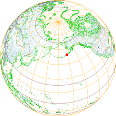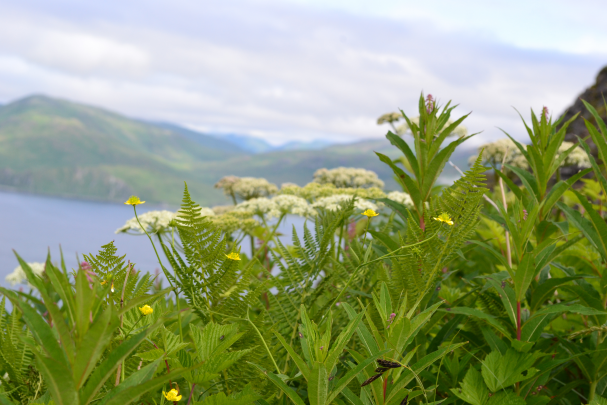-
Government
City Services-
DepartmentsCity Manager Administration City Clerk Finance Fire Department Human Resources Library Parks Culture and Recreation Planning Police Department Ports and Harbors Public Utilities Public Works
-
Mayor & City CouncilMayor & Council Agendas and Minutes Meeting Schedule Public Comment at Meetings Ordinances Resolutions Trip Reports City Code Annual Budget Lobbyist Reports Staff Directory
-
Committees & CommissionsHistoric Preservation Commission Library Advisory Committee Parks, Culture & Recreation Committee Planning Commission Apply to ServeElection InformationRegistering to Vote Polling Location Absentee Voting FAQ

Did You Know?
Did you know that the waters around Unalaska Island are one of the few places in the world to find the rare Whiskered Auklet?
-
-
Commerce
Port/Business-
PortPort Department Dock Facilities and Services AirportFisheriesCommercial Fishing Seasons Sport Fishing Seasons Fisheries Links Fisheries Reports Fish Species common in Alaska
-
BusinessBids and RFPs Business Directory Business Licensing Community Profile Economy Forms and Permits Shipping & Cargo Taxes Unalaska Visitors Bureau
-
TaxesPersonal Property Taxes Real Property Taxes Sales Taxes

Did You Know?
Did you know that Unalaska/Dutch Harbor was bombed by the Japanese during WWII?
-
-
Community
Residents/Visitors-
About UnalaskaCommunity Profile Economy Frequently Asked Questions History Is it Unalaska or Dutch Harbor? Passenger Transportation Photo Galleries Plants Population Shipping and Cargo Weather Wildlife WWII in the Aleutians
-
VisitorsVisitor Bureau Library Museum of the Aleutians Parks & Trails Passenger Transportation Sport Fishing Seasons Things To See & Do Tour Operators WWII National Historic Area and Visitor Center
-
ResidentsAnnual Festivals and Events Community Calendar Emergency Preparedness Health Care Library Non Profits & Community Services Parks & Trails Recreation Schools Sport Fishing Seasons

Did You Know?
Did you know that Unalaska is 800 miles from Anchorage and farther West than Hawaii?
-
-
I want to...
Help Center-
ApplyJob Board/Commission Building Permit Burn Permit Business License Fireworks Permit Pet LicenseContactStaff DirectoryRequestPublic Records Public Safety Records Utility Service
-
PaymentsUtilities TaxesRegisterVoter Registration Vehicle RegistrationReportBuilding Code Violation Road Maintenance Issue Street Light Outage Animal Control Issues
-
ViewAgendas and Minutes Annual Budget Bids & RFPs Code of Ordinances Calendar of Meetings Community Events Documents, Reports, & Presentations Forms, Permits & Applications Property Parcel Info Schedule of Fees & Charges Mapping & GIS

Did You Know?
That Unalaska’s Port of Dutch Harbor is the #1 Commercial Fishing Port in the United States, based on quantity of the catch and has been for more than 25 years?
Find Out More-
Plants: Unangam Hitnisangin-Aleut Plants

By: Sharon Svarny-Livingston
The variety of plants on the islands of the Aleutians, and particularly on Unalaska and Amaknak, will amaze most visitors who are fortunate to visit during summer months. Starting at the beach and reaching the very tips of the mountains, the absolute green will shock the eye. And, if you take a trek from the beach to the tips of those mountains, you will witness a rich progression of plants, some extremely sturdy, some incredibly delicate, and all obviously well adapted to the environment. Habitats seen are typical of those seen in most coastal zones - coastal beach, meadow, marsh, sea-side cliff, fresh and saltwater lagoon, stream, lake, higher slope and high rocky cliff. Probably one of the most amazing, and by far the easiest methods of discovering the plant life of an Aleutian island, is to simply take a seat in the tundra. You will be astounded with the number of wildflowers, mosses, and grasses within a one foot square area, completely within the grasp of your hand.
Aside from the simple beauty of the plant life and the importance of plants to the wildlife of the area, plants have always been important to the indigenous people who have inhabited the Aleutians for millennia. Though too numerous to list here as there are hundreds, they include both medicinal and edible plants. Medicinal knowledge of the plants is the one aspect of Unangan healing capabilities that survived the advent of outside contact. Absent today are the advanced surgical abilities of the Unangan/Unangas, as well as the practice of acupuncture. The demise of both was due to the devastation of the population, from an estimated 15,000 to 25,000, to a mere 1875 within 60 years of contact with European invaders.
As a part of most indigenous lifestyles, subsistence fishing, hunting, and gathering sustain the lives of large populations in rural Alaska. In the Aleutian area, we have relied upon the traditional harvest of natural resources for thousands of years and have passed this way of life, with its long-established culture and values, or the right way to live as human beings, down through generations. Medicinal knowledge and use of native plants requires precise knowledge of the environment, the seasonal patterns of medicinal plants, where they grow, when to collect them (at their most potent stage), how to prepare them, and how and in what dosages to administer them. In our region of the Aleutians, the Unangan used this knowledge to cure illnesses, alleviate pain, heal burns and bone fractures, and fight infection. Traditional medicine is intrinsically holistic. Conventional medicine is only beginning to conceptualize looking at health, healing, and medicine as a complete circle. So when I see plants, or simply discuss them, I immediately think of their value, not in terms of simple beauty, but to solve and balance health needs.
When you live on an island, you begin to realize the true importance of the environment. Its health represents stability and wellbeing. In the worldview, the entire environment is made up of tiny subsections of local environments which are under each of our local care. The Unangan/Unangas believe, as do most indigenous peoples, we are here to take care of and preserve the environment for those generations not yet seen. Walking through some of the most unforgettable tundra during your visit to Unalaska will certainly help promote that concept in your heart, as well as your mind.
___________________________________________________
See related photo gallery: Plants and Wildlife
